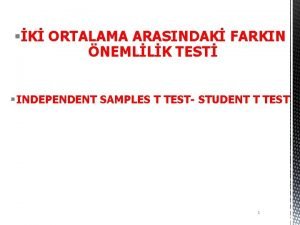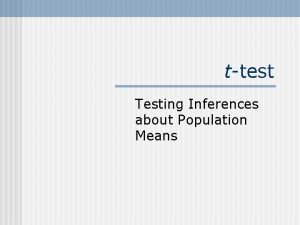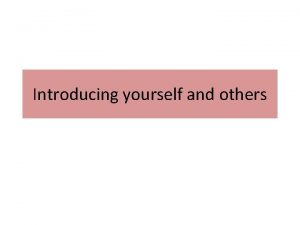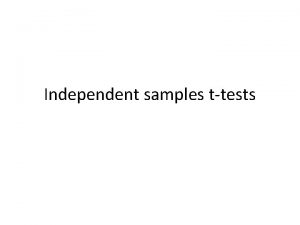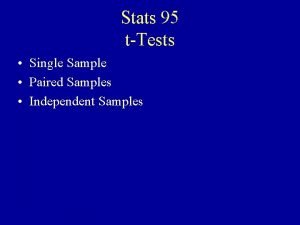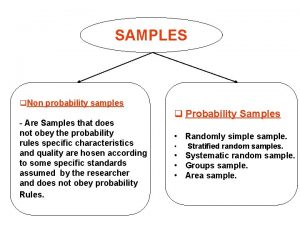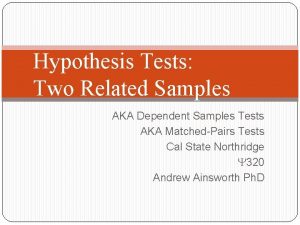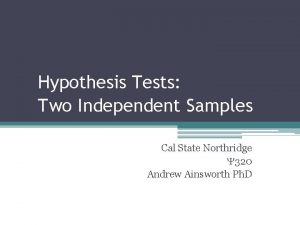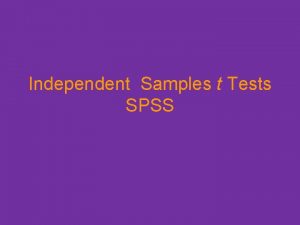Independent samples ttests Introducing t tests Z vs










- Slides: 10

Independent samples t-tests

Introducing t tests • Z vs t • Degrees of freedom • Types of t test – One sample – Dependent – Independent • P values

The t Test for a Single Sample • The single sample t test is used to compare a single sample to a population with a known mean but an unknown variance. • The formula for the t statistic is similar in structure to the Z

The t Test for Independent Samples • Observations in each sample are independent (not related to) each other. • We want to compare differences between sample means, not a mean of differences.

Sampling Distribution of the Difference Between Means • Imagine two sampling distributions of the mean. . . • And then subtracting one from the other… • If you create a sampling distribution of the difference between the means… – Given the null hypothesis, we expect the mean of the sampling distribution of differences, 1 - 2, to be 0. – We must estimate the standard deviation of the sampling distribution of the difference between means.

Example: Independent Samples t test Does staying up all night affect your creativity? Group 1 stays up all night, Group 2 gets a full night’s sleep Next morning: everyone thinks of uses for a bucket full of hungry cats Ho: no difference in # of ideas between groups Ha: sleep deprivation will lead to more, or fewer, creative ideas Group 1: n = 35, mean # ideas = 24. 0, standard deviation = 12. 2 Group 2: n = 29, mean # ideas = 16. 5, standard deviation = 11. 8 df = n 1 + n 2 - 2 = 62 -2. 00

Example continued 2. 00 < 2. 5 tcrit < t obs Reject Null & conclude sleep deprivation increases creativity 2. 00 -2. 00

Pooled Variance estimate, S 2 p • Assumes pop. variances are equal • Mean of each variance, proportional to df • S 2 p = (SS 1 + SS 2)/df df = n 1 + n 2 -2 • Plug in for both s 12 and s 22 for estimated standard error • Cohen’s d: (x-bar 1 - x-bar 2)/standard deviation (square root of pooled variance): √s 2 p

Confidence Interval Formulas z test CI: Single Sample t CI: Dependent t CI: Independent t CI:

Homework ch. 14 • Does consuming caffeine increase perceived attractiveness of others? A group of people are given a cup of coffee and asked to rate random pictures from 1 -10 (mean rating = 7. 5, s = 4, n = 36); another group is given decaf coffee and follows the same procedure (mean = 6. 0, s = 3, n = 36). 1. State the null hypothesis 2. Calculate t and find t* 3. Find your decision and interpretation/conclusion 4. (optional) find a 99% confidence interval for the difference in perceived attractiveness of others between subjects who do or don’t consume caffeine.

